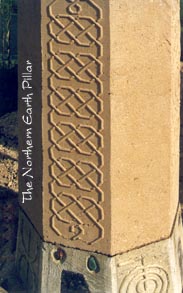|
|
Materials FAQsWe've had many questions about the building over the years since this website began - our faq section details the main questions with our responses. |
Frequently Asked Questions concerning the Materials we used
- How are your beams laminated?
- Where did you source your materials for the walls and floor? How did you determine their suitability?
- Where do you buy the emulsion and bonding product for the floor both the water barrier and the finish coat?
How are your beams laminated?
We purchased the beams already laminated - well-seasoned Australian
hardwoods which provided the F27 strength specified. They are
laminated with an epoxy adhesive.
This was not our preference as we would have preferred straight timber beams (all the other roof timbers are from Pink Ironbark). I believe we could have used green timber with an f18 rating and within 6 months it would have seasoned to the required f27 strength. However council would not accept this - the beams had to be f27 when installed and we had no time to season the beams ourselves. We therefore had to resort to laminated beams.
Once again I found councils' refusal to converse about the materials frustrating. My attitude was that the building inspectors were there to help me achieve the results I wanted within the parameters determined by the Australian building codes. Over time I came to believe they saw their purpose as forcing me to do it "by the book" - a book that was almost totally ignorant of non-conventional methods and materials.
I did have some "wins" in these interactions - principally with the floors.
Where did you source your materials for the walls and floor? How did you determine their suitability?
Different quarries have different materials - a sandstone quarry can probably point you in the right direction for a source of decomposed stone (decomposed granite is probably best) material. As to testing - yes you really do need to do some (or risk building a house of cards). If you're doing it yourself, you'll need to learn this and more, if you are sub-contracting the wall work (as we did) they will handle all that.
Where do you buy the emulsion and bonding product for the floor both the water barrier and the finish coat?
These are Australian products so I'm not sure they'll be relevant for
elsewhere in the world:-
The black bitumen coating for the sub-floor vapour barrier is called Emoleum -
The version I used was from CSR (Colonial Sugar Refineries although
why a sugar refinery is working with road surfacing intrigues me (-;), their
product name is EMASFALT, the version was ASS Anionic Slow Setting.
If I was surer of what I was doing I probably would prefer the fast setting
version for speed of working, but the slow setting was better to learn
with.
The sealing compound for the earth (walls and floors) came from a
company called Tech-Dry, it was called Earth Bonding Emulsion and
was PVA-based, that's about all I can tell you - more information is available on their website www.techdry.com.au, especially their Earth Building Protection page.
 |
return to top of this page |  |

